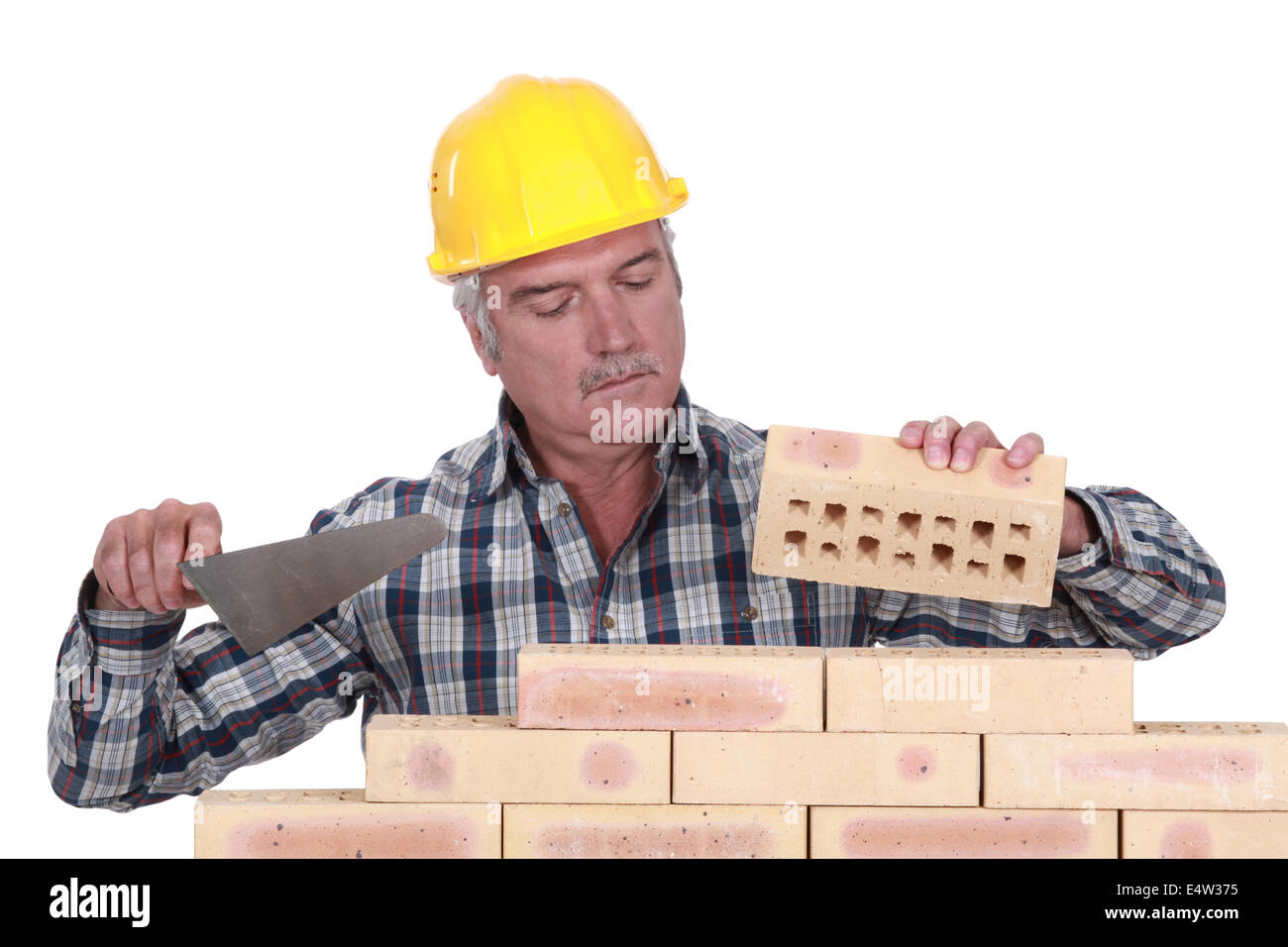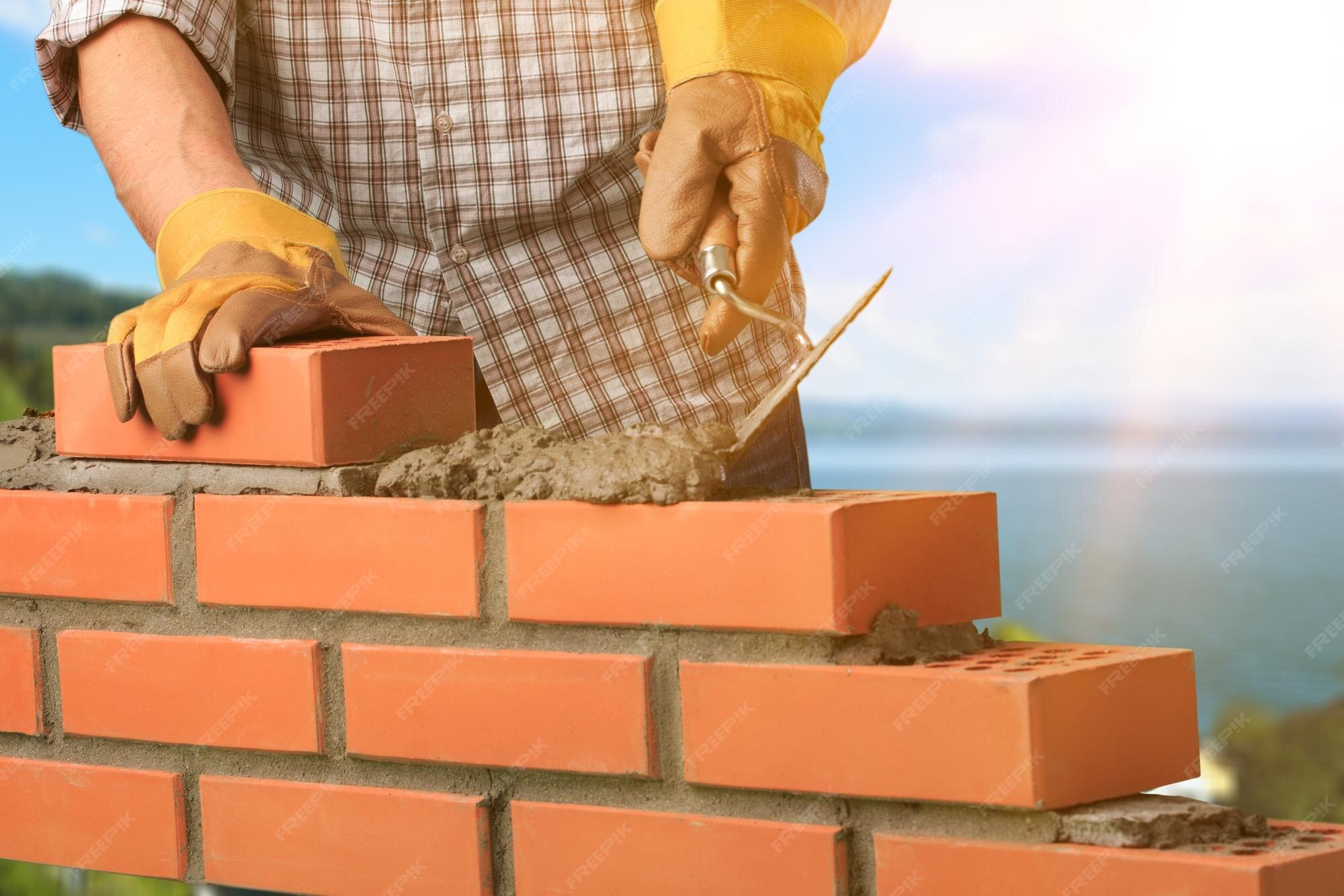The Only Guide to Bricklayer Auckland
Table of Contents3 Easy Facts About Bricklayer Auckland DescribedThe Best Strategy To Use For Bricklayer AucklandFascination About Bricklayer AucklandTop Guidelines Of Bricklayer AucklandMore About Bricklayer AucklandAn Unbiased View of Bricklayer Auckland
Blocks should constantly be stacked on planks; never ever stack them directly on uneven or soft ground. Do not keep bricks on scaffolds or paths.Other than where piled in sheds, block heaps must never be greater than 7 feet high. When a pile of brick reaches a height of 4 feet, it should be tapered back 1 inch in every foot of height over the 4-foot degree. The tops of brick piles have to be maintained degree, and also the taper have to be maintained during unpiling operations.
Structural bond describes how the individual masonry devices interlock or tie with each other right into a solitary architectural device. You can achieve structural bonding of block and also tile walls in one of the following 3 ways: Overlapping (interlocking) the masonry systems. Embedding metal incorporate linking joints. Making use of grout to stick nearby wythes of stonework.
The 15-Second Trick For Bricklayer Auckland
Pattern bond refers to the pattern developed by the masonry units as well as mortar joints on the face of a wall (Bricklayer Auckland). The pattern might arise from the architectural bond, or it might be totally decorative and also unassociated to the architectural bond. Number 4-4 shows the six standard pattern bonds alike use today.
The running bond is the simplest of the six patterns, including all cots. Because the bond has no headers, steel connections typically create the structural bond. The running bond is used greatly in cavity wall surface building, block veneer walls, as well as facing tile wall surfaces made with additional vast cot floor tile.
Examinations to locate the high quality of bricks have actually been studied in the previous write-up. Great blocks ought to not degenerate when placed in water. This is really essential as when these blocks are utilized with cement mortar, we need to thoroughly saturate them prior to laying. Only when fat lime or clay mortar is utilized or when one is compelled to use blocks that are not well burnt, this soaking regulation has to be loosened up.
Rumored Buzz on Bricklayer Auckland
In all cases, blocks should not be handled in baskets or in any type of various other setting which will damage the sharpness of their sides. A layer of mortar is spread to cover the full size of the wall for an ideal length of the lower course.
Ultimately, we press the side protruding mortar in securely to be level with the face of the wall if it is to be left unplastered. In the usual practice taken on by numerous masons, a row of blocks is initial positioned on a thin layer of bed mortar leaving the cross joints vacant.


Purely this is not an excellent practice. (Nevertheless, when utilizing concrete mortar of high stamina, the loss of stamina as a result of offense of these guidelines may be only low.)The wall surfaces are elevated really plumb. All programs are laid really horizontal and all upright joints Check Out Your URL really upright. Vertical joints in alternative training courses should come directly, one over the various other.
4 Easy Facts About Bricklayer Auckland Described
For this purpose, a wood straight edge with graduation offering a density of each brick training course consisting of joint can be made use of for support. For a thick wall, the above operation is repeated together with both faces of the wall and also the indoor filling up bricks for the thick wall surface are laid in a comparable manner.
This procedure of filling open joints is called flushing-up. It is wrongly left out for a number of programs on some badly-executed work and also only done later on (not after every course) in an inefficient fashion. It is not a good technique as well as needs to be avoided as it is important that every training course ought to be purged as much as the degree if good job is required.

Little Known Questions About Bricklayer Auckland.
The mortar rising and loading the upright joints totally as well as forms an extremely strong and strong wall. This is understood as larrying. For a rat trap bond work (as in the building and construction of dental caries wall surfaces), if the mortar is put thoughtlessly on the brick, some of hop over to these guys it will fall under the dental caries as well as will be lost.
The face of the brickwork will additionally be cleansed of all mortar droppings, etc(ii) When scenarios make it required to continue a section of a structure in uneven training courses, the work shall be constructed back (according to the bond utilized on the work) at an angle not steeper than 45 levels so as to ensure an attire as well as reliable bonding.
Otherwise, for faces to be plastered, ending up of the face joints should be accomplished as reviewed in listed below (This is very important.)(iv) The walls must be evenly increased all around not leaving any type of component one metre (three feet) less than the other - Bricklayer Auckland. A day's job must not be greater than 1.
Our Bricklayer Auckland Diaries
When the facework is to be later plastered or the joints alone are to be pointed, the joints must be raked while the wall surface is being built. Bricklayer Auckland. It must be raked to a minimal depth of 12 mm by a raking device during the why not try this out development of the work itself, when the mortar is still eco-friendly.
If plastering or aiming is not imagined, the joints must be struck flush as well as completed at the time of laying itself, as currently specified. Half-brick walls have a tendency to split unless treatment is taken in its construction. Brickwork in half-brick masonry is to be carried out with cots in 1: 5 mortar.